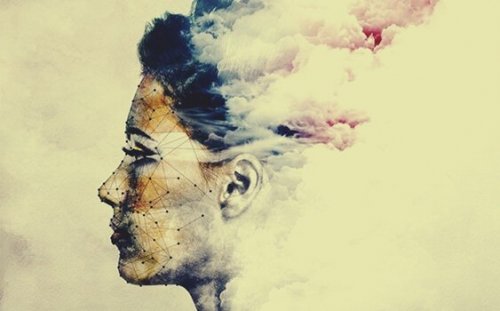Is it Possible to Change and Stay the Same?

Is it possible to change and stay the same? How many times has someone told us to “never change”? In that sense, change can be seen as negative or as a weakness. “It changed, it’s no longer the same.” Change is necessary, natural, and essential for survival. Even so, many see it as something negative. But what if we admit that it’s possible to change and stay the same?
When we’re faced with the need to make changes, we resist that need either internally or externally. This type of resistance acts against change. The resistance can continue as the change becomes established and as it continues to take effect. Is it possible that these changes, those transformations, allow us to maintain our essence?
In this article, we’ll deal with the subject of personal change. We’ll try to understand why there’s a resistance to change and why it can be frowned upon. Finally, we’ll try to give reasons that support the idea that we can transform over time and also stay the same.
Why do some people resist change and see it as a weakness?
Resisting change is normal. All systems have internal forces that seek permanence and stability. This means that maintaining our daily dynamics (although this is problematic) is easier than creating a different or new alternative dynamic. You already have certain habits, and others have adapted to our habits. A routine allows you to be predictable. Routines allow others to know what to expect from us. Therefore, short-term permanence is usually more comfortable than change. This is why people resist it so much.

On the other hand, people resist change because, as time passes, they get used to habits and coping mechanisms. They spend a lot of time creating psychological tools to manage difficult moments. Even when those tools aren’t appropriate, they’re happy to use them because they’re their own, personal creation.
Resistance to change arises in this way. Some see change as a weakness because if you’ve acted in a certain way for so long, why do you need to change? As we’ve said, people around us also feel calmer and more comfortable if they can predict our attitudes, responses, and behaviors. If we change, that prediction is almost impossible to make. Therefore, without realizing it, those around us also seek permanence and stability. They may come to oppose some resistance to the changes we make.
“Intelligence is the ability to adapt to change.”
People can see change as a weakness for other reasons. A person changing their mind can make others perceive them as insecure, fickle, and unpredictable. However, changing our incorrect opinion is actually an intelligent and courageous decision in the long run. If we don’t change our opinions, we end up being prisoners of our own contradiction: thinking something and defending the opposite.
The process of changing our opinions
Likewise, changing our opinions is the result of a reflexive process. This process starts when we receive new information and then start to perceive reality in new ways because of that new information. We end up realizing that what we previously thought no longer helps us and is therefore no longer correct. In our minds, this new information is great! What defines us as humans is the ability to make decisions based on intelligence.
The process of change implies a personal metamorphosis that involves many of our ideas and characteristics. As we change, we may feel as if we are shedding a part of who we used to be. Others may see this change as weakness.
Changing and staying the same: A possible challenge
In most cases, the process of personal change seeks to bring out the best in each individual. In reality, what we know as change is the result of freeing people from their chains, limits, and fears. We’re not really changing, just removing the barriers that kept us from our true selves. We’re being faithful to ourselves by allowing ourselves the freedom to fly.
How can we change and stay the same? We can do it by looking around our own selves. We should look at reality from different points of view while knowing how to appreciate the unique differences in each experience. From there, we must choose how to behave, what to think, and what to say according to the situation and how we feel. We should be able to act without preconceived and rigid rules that force us to act the same way all the time.

To be able to change and stay the same, we must leave behind any type of rules or requirements. We have to consciously choose the best way to show ourselves to the world at any given moment. This allows the individual to be faithful to their own essence. From this point on, they can change and also stay the same in a way. Choosing how to position yourself according to what you feel rather than according to what you “have to do” is the most freeing and legitimate way of staying true to yourself.
Eastern philosophy and the art of changing while staying the same
Eastern philosophy explains that people shouldn’t reach a standstill. We have to identify our own limitations and overcome them. This way, we open a space for our true being to emerge, manifest, and develop.
Different Eastern philosophers explain that changing and staying the same isn’t a skill that’s learned easily or quickly. It requires constant effort because our psychological system seeks to remain stable with firm pillars.
“I beg your pardon I didn’t recognise you – I’ve changed a lot.”
-Oscar Wilde-
According to Robert Spencer in his book The Craft of the Warrior, we have to get used to handling different points of view to stay elastic. This will allow us to avoid the danger of anchoring ourselves to a single perspective. Only proper training in this type of mental gymnastics leads to spontaneity. If the exercise is interrupted, our mind will quickly try to protect itself while it becomes trapped in the chains of its own thoughts.
To conclude, I would like to share a metaphor that explains how it’s possible to change and stay the same.
“Water defeats everything because it adapts to everything. It can be a liquid, a solid, or a gas. It can be soft or hard, rigid or elastic. Water can run slowly, roll, avoid an obstacle, or collide violently with it. Precipitate or splash. Water is the natural analogy of change as the ability to adapt strategically to different circumstances.”
What would happen if you were like water?
This text is provided for informational purposes only and does not replace consultation with a professional. If in doubt, consult your specialist.








